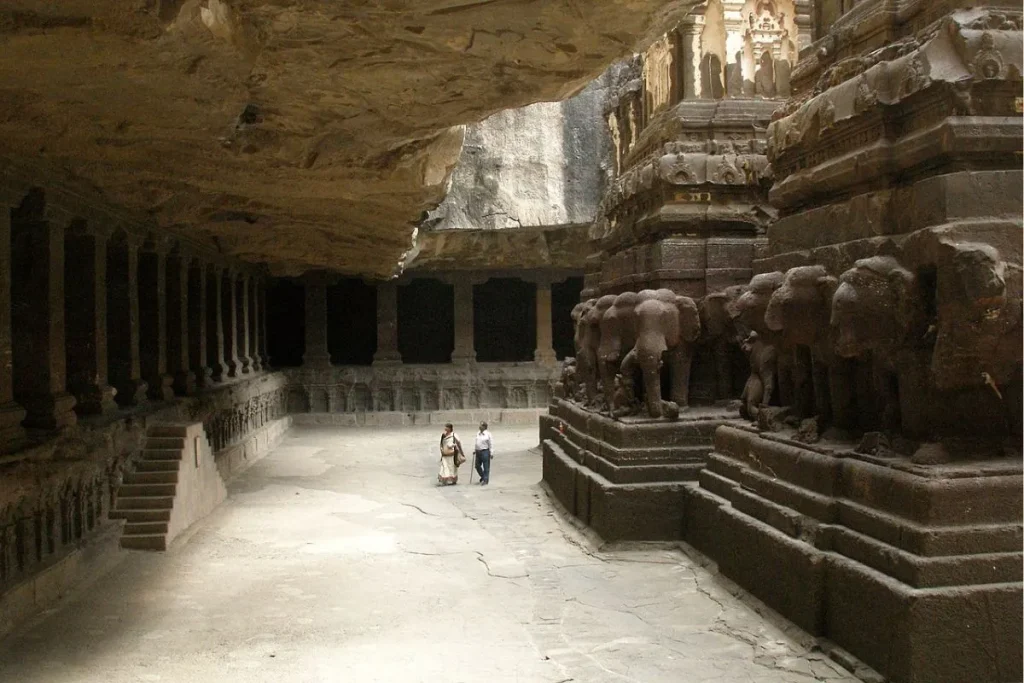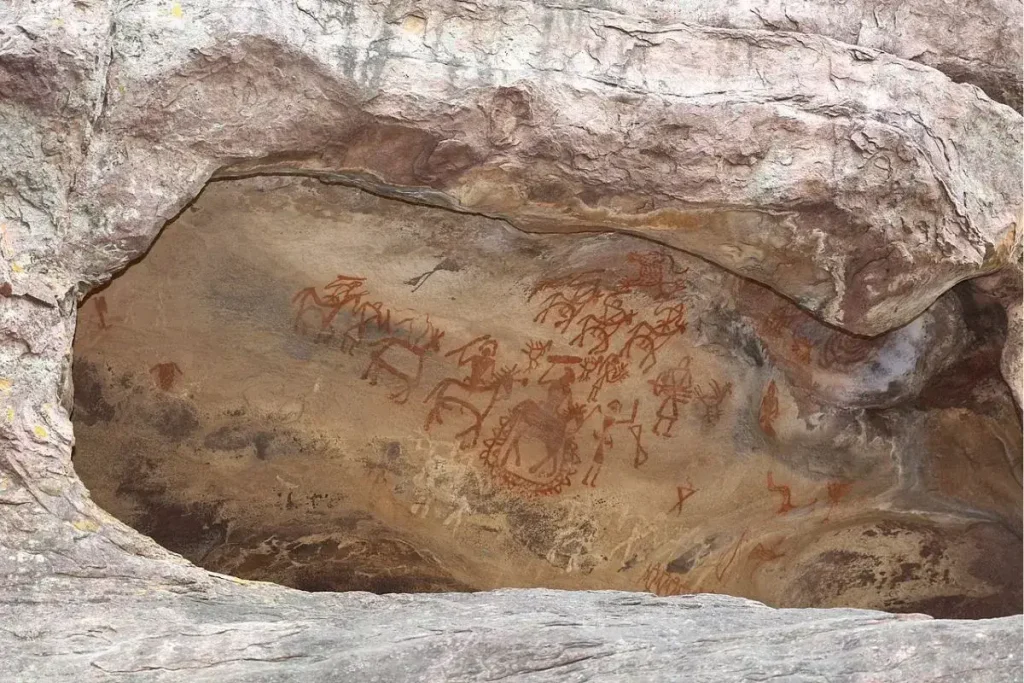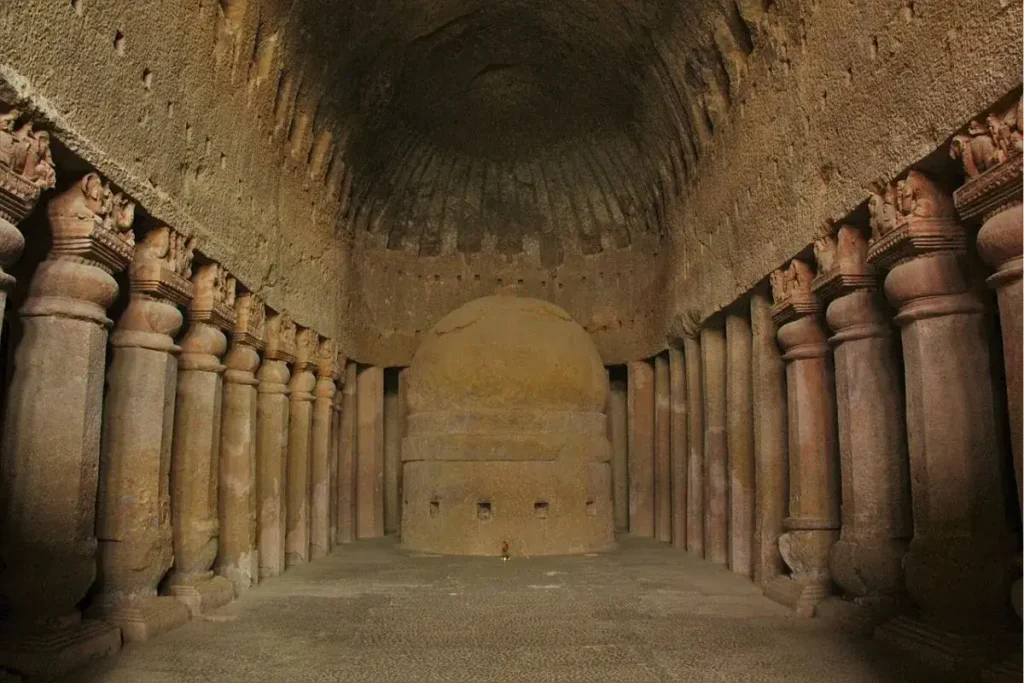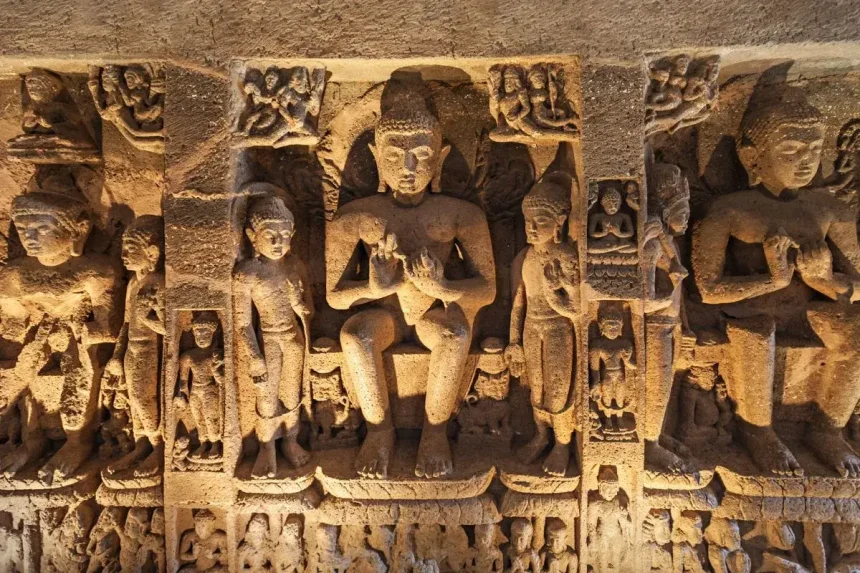The subcontinent is home to many wonders. Among these are stunning caves. They attract tourists from all over the world. These caves are not just holes in rocks. They are historical, cultural, and natural treasures. Let’s explore some of the most famous cave tourist sites in the subcontinent, including India, Bangladesh, and Pakistan.
Shah Allah Ditta Caves, Pakistan
The Shah Allah Ditta Caves are near Islamabad, Pakistan. These caves are natural formations. They have ancient rock carvings.
History of Shah Allah Ditta Caves
The Shah Allah Ditta Caves have been used for centuries. They are named after a Sufi saint, Shah Allah Ditta. The caves have historical and cultural significance.
Visiting Shah Allah Ditta Caves
The Shah Allah Ditta Caves are open all year round. The best time to visit is from October to March. Guides are available to explain the history and significance.
Katas Raj Temples, Pakistan
The Katas Raj Temples are in Punjab, Pakistan. This site includes several Hindu temples and caves.
History of Katas Raj Temples
The Katas Raj Temples date back to ancient times. The caves were used by monks and ascetics for meditation.
Visiting Katas Raj Temples
The Katas Raj Temples are open all year round. The best time to visit is from October to March. Guides are available to explain the history and significance.
Takht-i-Bahi, Pakistan

Takht-i-Bahi is in Khyber Pakhtunkhwa, Pakistan. It is an ancient Buddhist monastic complex. The site includes many caves and stupas.
History of Takht-i-Bahi
Takht-i-Bahi dates back to the 1st century CE. It was a major Buddhist monastery. The caves were used for meditation and living by monks.
Visiting Takht-i-Bahi
Takht-i-Bahi is open all year round. The best time to visit is from October to March. Guides are available to explain the history and significance.
Buddhist Caves of Taxila, Pakistan
The Buddhist Caves of Taxila are in Punjab, Pakistan. Taxila is an ancient city with a rich history. The caves are part of the larger archaeological site.
History of Buddhist Caves of Taxila
The Buddhist Caves of Taxila date back to the 3rd century BCE. They were used by Buddhist monks for meditation and living.
Visiting Buddhist Caves of Taxila
The Buddhist Caves of Taxila are open all year round. The best time to visit is from October to March. Guides are available to explain the history and significance.
Ajanta Caves, India
The Ajanta Caves are in Maharashtra, India. These caves are over 2,000 years old. They have beautiful paintings and sculptures. The caves were carved into a rock face. They tell stories from Buddha’s life. The artwork is very detailed. Many tourists visit these caves each year.
History of Ajanta Caves
The caves were built in two phases. The first phase was in the 2nd century BCE. The second phase was in the 5th century CE. Monks used these caves for meditation. They also used them as temples.
Visiting Ajanta Caves
Ajanta Caves are open all year round. The best time to visit is during the cooler months. Guides are available to explain the history. There are also sound and light shows at night. These shows bring the caves to life.
Ellora Caves, India

The Ellora Caves are also in Maharashtra, India. They are close to Ajanta Caves. There are 34 caves at Ellora. They are famous for their large rock-cut temples. The temples are dedicated to Hindu, Buddhist, and Jain religions.
History of Ellora Caves
Ellora Caves were built between the 6th and 10th centuries CE. They show the religious harmony of that time. The most famous cave is Cave 16. It is also known as Kailasa temple. It is the largest single monolithic rock excavation in the world.
Visiting Ellora Caves
Ellora Caves are open all year. The best time to visit is from October to March. There are guides available. They can help you understand the history and architecture.
Elephanta Caves, India
The Elephanta Caves are on Elephanta Island. This island is near Mumbai, India. There are seven caves on this island. The caves have impressive rock-cut sculptures. The most famous sculpture is the Trimurti. It shows three faces of Lord Shiva.
History of Elephanta Caves
The Elephanta Caves date back to the 5th century CE. They were created by Hindu rulers. The Portuguese named the island “Elephanta” because of a large stone elephant statue they found.
Visiting Elephanta Caves
To visit Elephanta Caves, you need to take a ferry from Mumbai. The ferry ride takes about an hour. The best time to visit is from November to February. There are guides and maps available to help you explore the caves.
Badami Caves, India
Badami Caves are in Karnataka, India. There are four main caves. These caves are carved into sandstone cliffs. They have beautiful sculptures and carvings. The caves are dedicated to Hindu and Jain gods.
History of Badami Caves
The Badami Caves were built in the 6th century CE. They were created by the Chalukya dynasty. The caves show excellent craftsmanship. The carvings depict various gods and goddesses.
Visiting Badami Caves
Badami Caves are open all year round. The best time to visit is from October to March. The caves are located near Badami town. Guides are available to explain the history and art.
Ajanta and Ellora Caves: UNESCO World Heritage Sites
Both Ajanta and Ellora Caves are UNESCO World Heritage Sites. They are protected for their historical and cultural importance. Visiting these caves is like stepping back in time. The art and architecture are amazing.
Bhimbetka Rock Shelters, India

The Bhimbetka Rock Shelters are in Madhya Pradesh, India. These shelters have ancient cave paintings. The paintings are thousands of years old. They show early human life and activities.
History of Bhimbetka Rock Shelters
The Bhimbetka Rock Shelters date back to the Stone Age. They are one of the oldest rock art sites in the world. The paintings show hunting, dancing, and daily life.
Visiting Bhimbetka Rock Shelters
The Bhimbetka Rock Shelters are open all year. The best time to visit is from October to March. Guides are available to explain the history and significance of the paintings.
Borra Caves, India
The Borra Caves are in Andhra Pradesh, India. These caves are famous for their stalactites and stalagmites. The caves are deep and have beautiful formations.
History of Borra Caves
The Borra Caves are millions of years old. They were discovered by British geologist William King in 1807. The caves are formed by the flow of the Gosthani River.
Visiting Borra Caves
The Borra Caves are open all year round. The best time to visit is from November to February. The caves are well-lit, and there are guides available.
Siju Cave, India
The Siju Cave is in Meghalaya, India. It is also known as the Bat Cave. The cave is very long and has many chambers. It is famous for its limestone formations.
History of Siju Cave
The Siju Cave is one of the longest caves in India. It is home to many bats. The cave has beautiful formations created by water over thousands of years.
Visiting Siju Cave
The best time to visit Siju Cave is from November to March. You need to bring a torch as the cave is dark. Local guides can help you explore the cave.
Kanheri Caves, India

The Kanheri Caves are in Maharashtra, India. They are located in the Sanjay Gandhi National Park. There are 109 caves. They were used by Buddhist monks.
History of Kanheri Caves
The Kanheri Caves date back to the 1st century BCE. They were used as monasteries and meditation halls. The caves have beautiful carvings and inscriptions.
Visiting Kanheri Caves
The Kanheri Caves are open all year round. The best time to visit is from October to March. The caves are located near Mumbai. Guides are available to explain the history.
Udayagiri and Khandagiri Caves, India
The Udayagiri and Khandagiri Caves are in Odisha, India. There are 33 caves in total. These caves have beautiful carvings and inscriptions.
History of Udayagiri and Khandagiri Caves
The caves were built in the 1st century BCE. They were created by Jain monks. The caves were used for meditation and living.
Visiting Udayagiri and Khandagiri Caves
The Udayagiri and Khandagiri Caves are open all year. The best time to visit is from October to March. Guides are available to explain the history and art.
Edakkal Caves, India
The Edakkal Caves are in Kerala, India. These caves have ancient rock carvings. The carvings are very detailed and beautiful.
History of Edakkal Caves
The Edakkal Caves date back to the Neolithic age. The carvings show human figures, animals, and symbols. The caves were discovered by Fred Fawcett in 1890.
Visiting Edakkal Caves
The Edakkal Caves are open all year round. The best time to visit is from November to March. The caves are located on Ambukuthi Hill. Guides are available to explain the history.
Dungeshwari Cave Temples, India
The Dungeshwari Cave Temples are in Bihar, India. These caves are also known as Mahakala Caves. They are famous for their Buddhist significance.
History of Dungeshwari Cave Temples
The caves date back to ancient times. It is believed that Buddha meditated in these caves. The caves have beautiful sculptures and paintings.
Visiting Dungeshwari Cave Temples
The Dungeshwari Cave Temples are open all year round. The best time to visit is from October to March. Guides are available to explain the history and significance.
Krem Liat Prah, India
The Krem Liat Prah is in Meghalaya, India. It is the longest natural cave in India. The cave has many chambers and passages.
History of Krem Liat Prah
The Krem Liat Prah is part of the Liat Prah cave system. It is over 30 kilometers long. The cave has beautiful limestone formations.
Visiting Krem Liat Prah
The best time to visit Krem Liat Prah is from November to March. You need to bring a torch as the cave is dark. Local guides can help you explore the cave.
Jogimara Caves, India
The Jogimara Caves are in Chhattisgarh, India. These caves have ancient paintings and inscriptions. The paintings are very old and beautiful.
History of Jogimara Caves
The Jogimara Caves date back to the 3rd century BCE. The paintings show scenes of dancers and musicians. The inscriptions are in Brahmi script.
Visiting Jogimara Caves
The Jogimara Caves are open all year round. The best time to visit is from October to March. Guides are available to explain the history and art.
Amarnath Cave, India
The Amarnath Cave is in Jammu and Kashmir, India. It is a famous Hindu shrine. The cave has a natural ice stalagmite.
History of Amarnath Cave
The Amarnath Cave is over 5,000 years old. It is believed to be the abode of Lord Shiva. The ice stalagmite forms naturally every year.
Visiting Amarnath Cave
The best time to visit Amarnath Cave is during the Amarnath Yatra. This pilgrimage takes place from June to August. Pilgrims must trek to the cave, which is a challenging journey.
Shalban Vihara, Bangladesh
Shalban Vihara is in Mainamati, Bangladesh. It is a historical Buddhist site. The site includes ancient ruins and caves.
History of Shalban Vihara
Shalban Vihara dates back to the 8th century CE. It was a major Buddhist monastic site. The caves were used for meditation and living by monks.
Visiting Shalban Vihara
Shalban Vihara is open all year round. The best time to visit is from October to March. Guides are available to explain the history and significance.
Mahasthangarh, Bangladesh
Mahasthangarh is in Bogra, Bangladesh. It is one of the oldest archaeological sites in Bangladesh. The site includes ancient ruins and caves.
History of Mahasthangarh
Mahasthangarh dates back to the 3rd century BCE. It was an important city in ancient Bengal. The caves were used for various purposes, including storage and meditation.
Visiting Mahasthangarh
Mahasthangarh is open all year round. The best time to visit is from October to March. Guides are available to explain the history and significance.
Sitakunda Caves, Bangladesh
The Sitakunda Caves are in Chittagong, Bangladesh. These caves are natural formations. They are surrounded by beautiful landscapes.
History of Sitakunda Caves
The Sitakunda Caves have been used for centuries. They are named after Sita, a character from the Hindu epic Ramayana. The caves have religious and cultural significance.
Visiting Sitakunda Caves
The Sitakunda Caves are open all year round. The best time to visit is from October to March. Guides are available to help you explore the caves.
Conclusion
The subcontinent is rich in history and culture. The caves in India, Bangladesh, and Pakistan offer a glimpse into the past. They are more than just tourist attractions. They are places of worship, meditation, and learning. Visiting these caves is a journey through time. So, pack your bags and explore the magical caves of the subcontinent.
More Updates: https://www.timelinetale.com/







